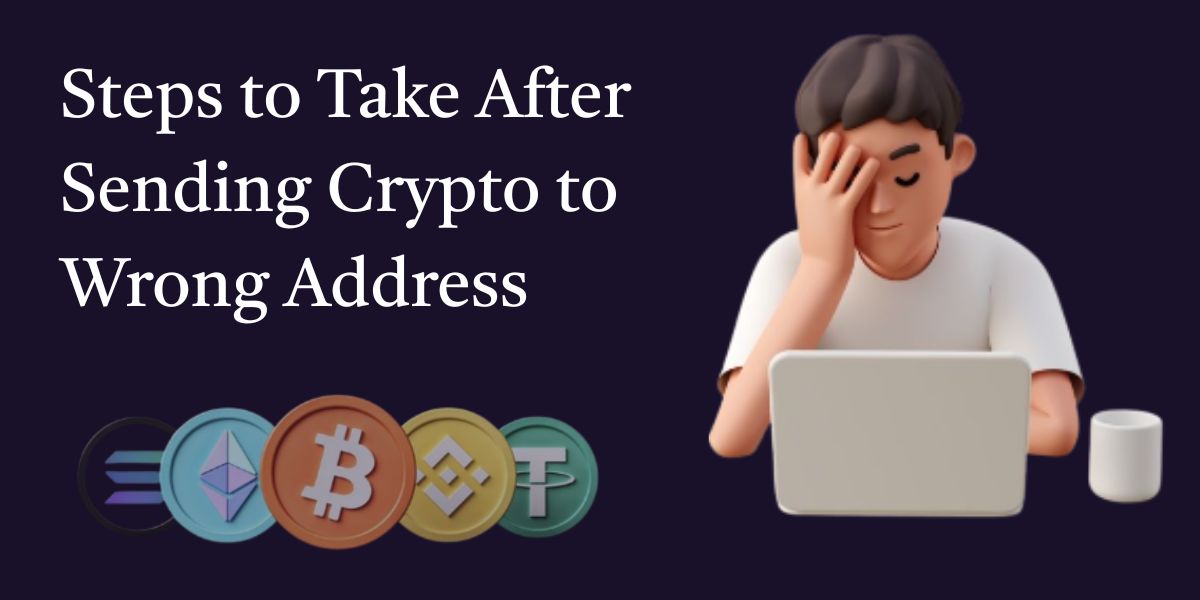Steps to Take After Sending Crypto to Wrong Address

Sending cryptocurrency to the wrong wallet address is a nightmare scenario for many crypto users. Unlike traditional banks, most blockchain transactions are irreversible, which means a simple error can lead to the permanent loss of funds. Whether it’s a small transaction or a significant investment, quick and informed action is your best chance of minimizing the damage.
While there are no guaranteed recovery options in every case, this guide will walk you through the most effective steps to take, precautions to follow, and methods that might help you recover or mitigate the loss.
Step 1: Confirm the Transaction Details
Before you panic, double-check everything. Sometimes users think they’ve sent funds to the wrong address when the issue might be a temporary network delay or a syncing issue with the wallet app.
-
Verify the destination address in your transaction history
-
Check the transaction hash (TXID) on a blockchain explorer
-
Ensure you’re viewing the correct blockchain network (e.g., Ethereum vs. BNB Chain)
This step helps confirm whether the transaction truly went to the wrong address or if it’s just delayed or pending.
Step 2: Identify the Type of Error
There are different scenarios where crypto might end up in the wrong place:
-
Typo in the address: Most modern wallets won’t let this happen due to checksum protection.
-
Wrong blockchain: For example, sending ERC-20 tokens to a BSC address.
-
Wrong wallet type: Sending tokens to a smart contract or non-recoverable address.
-
Mistake in selecting the receiver: Choosing the wrong contact or QR code.
Each case requires a different recovery path.
Step 3: Contact the Receiving Platform (If Applicable)
If you accidentally sent crypto to a centralized exchange (like Binance or Crypto.com) but used the wrong memo, tag, or wallet type, there’s a chance the funds can be recovered. These platforms often have procedures to retrieve lost funds in specific cases.
In such instances, reaching out to their support team is essential. If you are a Crypto.com user, for example, contacting their support using the crypto.com support number can initiate a recovery process or at least get guidance tailored to your issue.
Provide the following when you contact support:
-
Transaction ID
-
Time and date of the transfer
-
Blockchain used
-
Wallet address involved
Some exchanges may charge a fee for recovery and it may take several days or even weeks depending on complexity.
Step 4: Try to Reach the Wallet Owner
If the receiving address belongs to another individual or a known third party (e.g., a friend, colleague, or company), you might be able to contact them and request a return of funds. Since blockchain addresses are anonymous, you’ll need to be certain the wallet belongs to someone you know.
If it’s a stranger, and you somehow know their identity (from an exchange withdrawal or identifiable transaction), politely ask them to return the funds. Keep in mind, they are under no obligation to do so unless compelled legally.
Step 5: Explore Blockchain Recovery Services (With Caution)
There are a few blockchain forensics and crypto recovery services that specialize in tracking down and helping recover lost or stolen crypto. These services often charge high fees and should only be approached if you’re dealing with a significant amount and have exhausted other options.
Be extremely careful—there are many scammers posing as recovery agents. Never pay upfront fees to unverified services, and always check reviews or community discussions before engaging.
Step 6: Learn From the Mistake and Secure Your Wallet
Even if you manage to recover your funds, use this experience to strengthen your future practices:
-
Always double-check addresses before confirming a transaction
-
Use whitelist features for common addresses in your exchange accounts
-
Send a test transaction when transferring a large amount
-
Back up your wallet credentials and private keys securely
If you’re ever locked out of your wallet due to suspicious activity or repeated errors, you can learn how to unlock crypto.com account with step-by-step instructions for verification and support processes.
Final Thoughts
Mistakenly sending crypto to the wrong address can be stressful, but taking calm, informed steps immediately improves your chances of resolving the issue. Whether it’s reaching out to a support team, tracing the transaction, or learning from the error, every action matters. And above all, adopting careful sending habits and security practices is your best defense against such mistakes in the future.
Latest article:








